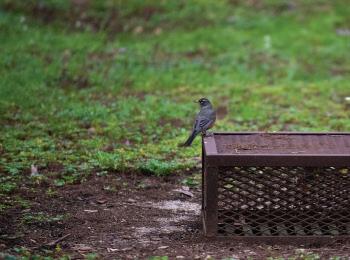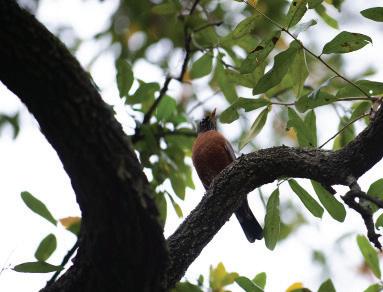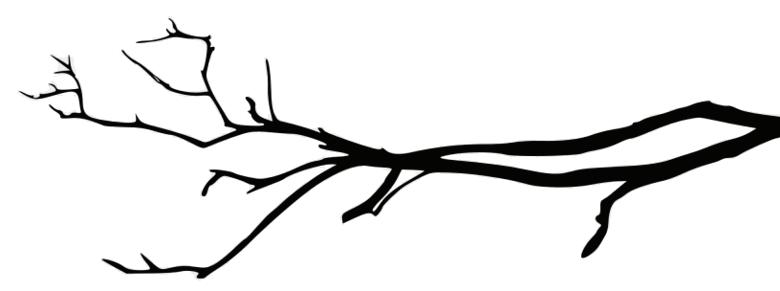CAMMY’S JOURNEY
Cammy Hall’s long journey to Baton Rouge.



Read on page 2

LSUReveille.com
@lsureveille




Read on page 2

LSUReveille.com
@lsureveille
B-16 Hodges Hall
Louisiana State University
Baton Rouge, La. 70803

NEWSROOM (225) 578-4811

Editor-in-Chief JOSH ARCHOTE
Digital Managing Editor HANNAH MICHEL HANKS
Digital Editor JAYDEN NGUYEN
News Editor CLAIRE SULLIVAN
Deputy News Editor GABBY JIMENEZ
Sports Editor PETER RAUTERKUS
Deputy Sports Editor MACKAY SUIRE
Entertainment Editor WILL NICKEL
Multimedia Editor MATTHEW PERSCHALL
Production Editor MADISON COOPER
Chief Designer EMMA DUHE
ADVERTISING
(225) 578-6090
Layout/Ad Design EMILY TRAN
BY MORGAN ROGERS @__morganrogers“I wasn’t going to do a fifth year,” graduate student Cammy Hall said. “I think mentally I was just ready to end it.”
Hall’s journey in gymnastics began in a small Virginia town at the age of 3. In a few short years, her natural talent and determination made it clear that she had enough potential to reach collegiate heights. She began training intensely in middle school and eventually landed a spot on the University of Maryland gymnastics roster.
Considering herself a ‘mediocre gymnast,’ she was perfectly content competing on a team with a quiet presence in the NCAA. However, her path took a quick turn when Utah head coach Tom Farden attended one of her practices and immediately offered her a spot on his team.
The road from Maryland to Utah was tough. Jumping from a No. 30 ranked school to a topfive contender in the country seemed impossible. The Utes boasted a roster of prior Olympic qualifiers and U.S. national team members. Naturally, the Virginia native feared that she would hold
the Utes back.
“I pushed myself outside of the gym to start making progress,” Hall admitted. “Then in December, right before my first season, I tore my Achilles...I think it taught me a lot.”
Hall, who’s not an easily discouraged person, quickly started the rehabilitation period for her injury. After four months on crutches, Hall was ready to make a name for herself in collegiate gymnastics. She started every meet on vault in her sophomore season, recording a 9.95 careerhigh before the season came to an abrupt halt due to the COVID-19 pandemic.
“I was so excited, doing better, and was more prepared for the season than ever,” Hall told LSUSports. “I was so crushed, hopeless and really thought this could be the end. I’m naturally happy all the time, so it was really hard because my true self was so sad. Everything was falling apart when it was supposed to be coming together.”
After obstacle after obstacle, her love for the sport gradually began to fade throughout her collegiate career. She commented that her junior and senior years progressed rather awkwardly.
After failing to stick her landing on vault at last year’s NCAA Championship, Hall decided to pack her bags and move back home after graduation.
“I realized it didn’t define me. Gymnastics isn’t forever,” Hall said to LSUSports. “And I was coming to terms with the fact that I could start working and doing other things with my life.”
She began coaching a club team of young girls over the summer. Their excitement and ambition reminded her of how she once felt about gymnastics at their age. The girls constantly pried her about returning to the collegiate level, to which she replied, “It’s much more complicated than that.”
When they recommended that she could simply transfer, she realized that finding the way back to love she once had for the sport was simple after all.
She entered the transfer portal. She contacted former Utah and current LSU coach Garrett Griffeth. Just one facetime call later, she officially became a Tiger for the LSU gymnastics team.
“I was very worried. I was scared actually,” Hall said. “I felt like a freshman to the program, learning the new environ-
ment and just figuring out the system. But honestly, they have welcomed me with open arms since day one. I feel like I’ve been here the whole time. I was never afraid to voice my opinion because I’ve always felt like they care about what I have to say.”
She also appreciates competing in a city with a higher minority population. She thinks a diverse representation at this level of gymnastics is crucial.
Currently suffering from yet another injury, Hall’s next step is unforeseeable. For now, she’s found a home that makes her comfortable enough to grow at her own pace without any pressure. For the first time, she’s prioritizing her body first and contributing to the team in a new way.
As for her next step, she’s open to staying with the program at LSU if the opportunity presents itself. On the other hand, she’s also looking forward to starting a career as a gymnastics coach.

“I would definitely [go] back to those girls at home that I coached,” Hall said. “They’re amazing. I hope I can one day be the coach that three-year-old me always needed.”
Layout/Ad Design SOFIA RAMOS

The Reveille holds accuracy and objectivity at the highest priority and wants to reassure its readers the reporting and content of the paper meets these standards. This space is reserved to recognize and correct any mistakes that may have been printed in The Daily Reveille. If you would like something corrected or clarified, please contact the editor at (225) 578-4811 or email editor@lsu.edu.
The Reveille is written, edited and produced solely by students of Louisiana State University. The Reveille is an independent entity of the Office of Student Media within the Manship School of Mass Communication. A single issue of The Reveille is free from multiple sites on campus and about 25 sites off campus. To obtain additional copies, please visit the Office of Student Media in B-39 Hodges Hall or email studentmedia@ lsu.edu. The Reveille is published biweekly during the fall, spring and summer semesters, except during holidays and final exams. The Reveille is funded through LSU students’ payments of the Student Media fee.
Political communication junior Byron Hansley and biological sciences junior Amber Salone are running for student-body president and vice president under the Inspire ticket.

Hansley said their religious faith was what motivated them to run. He said they aim to make an impact, regardless of whether they win or lose, and that he wants his campaign to inspire people to make changes around LSU’s campus.
“This is not a campaign,” Hansley said. “This is a movement.”
Hansley said he considers his campaign a movement because they’ve already been doing work around campus and aim to continue that work regardless of the election’s outcome.
Salone said her and Hansley work as one unit. Any decision they make will be done cooperatively, she said.
“Me and Byron, we work as one. Everything we ever do is a collective decision,” Salone said. “We believe in each other equally.”
Hansley said he began his time in Student Government on the Freshman Leadership Council. He serves now as the director of finance for the executive branch of SG.
Hansley has other roles on campus. He’s the training associate chair of LSU Ambassa-
dors, the vice president of the African American Cultural Center Ambassadors. He’s also the vice president and social action and service chair of the Iota Tau chapter of Phi Beta Sigma fraternity and is a President Millennial
Scholar.
Hansley also served as the student ex officio on the A.P. Tureaud Sr. Black Alumni chapter board, where he said he represented the interests of underrepresented students.
Salone also got her start in SG on the Freshman Leadership Council. She was the assistant director of the community relations department of the execu-
A Baton Rouge judge ruled against the Reveille editor-inchief on Thursday in a public records lawsuit, arguing that documents related to a 2019 internal investigation of an LSU employee are not subject to public record.
The decision comes after Reveille editor-in-chief Josh Archote sued LSU for the release of the records in January.
Archote and his lawyers, from the Tulane First Amendment Law Clinic in New Orleans, intend to appeal the decision.
The judge, Kelly Balfour of the 19th Judicial District Court, held that because access to the records had already been shot down in another case, McMakin v. LSU, in 2022, no one can seek those records in the future.
Archote’s lawyers argued that circumstances surrounding Abels and the 2019 police report are different now compared to when the McMakin case was decided, and that Archote’s reasons for seeking the records were related to the public’s interest in the case.
The court ruled in the McMakin case that the privacy of the
Baton Rouge’s downtown office buildings are emptier, its traffic lighter, its mom-and-pop restaurants struggling and the job market has seemingly never been more competitive.
These are some of the consequences brought on by the white-collar workforce switching and adhering to remote work almost overnight during the Covid-19 pandemic.
Managing attorney Michael Ferachi said were it not for the pandemic, the remote work transition would’ve taken years to complete.
“We had to do it in March 2020—we didn’t have a choice. But if we’d been left to our own devices, we, law firms and other companies, would still be requiring people to come into the office,” Ferachi said.
Ferachi works for a nation-
wide law firm whose Baton Rouge satellite occupies floors of One American Place, Baton Rouge’s second largest skyscraper. Three years since the onset of the pandemic, Ferachi said the office has only spatially downsized when its lease was up for renewal.
An article by Baton Rouge Business Report said an official, city-wide study on office occupancy hadn’t been completed for Baton Rouge’s market, but had been for One American Place. According to the article, an average of 375 people were in the building every day before the pandemic. Since then, the average has dropped to 220 — a 44% decline in attendance.
Ferachi has observed fewer people downtown since the move to remote work. Fewer office workers in the sector has caused issues for downtown mom-and-pop restaurants that count on the lunch rush. Some
can only stay open from 10 a.m. to 2 p.m., if they can remain open or staffed at all.
Statistics gathered by Axios said American office occupancy rose to a post-pandemic high of 50.4% compared to pre-pandemic. The study also noted stagnation in office occupancy since September 2022.
Ferachi said the firm’s decision to cut back on office space was foremost financial. Fewer employees going into work meant less capital devoted to workspace.
Based on data that human resources specialist Karen Breaux reviewed from the Bureau of Labor Statistics paired with her 40 years of HR insight, she believes 20-25% of companies are now moving toward a remote working environment or a hybrid system.
She said businesses during the pandemic tried to cut costs while still providing familiar ser-
vices. Working remotely was a clear answer because it not only allowed companies flexibility, but could also save them money. These factors have contributed to creating a “very competitive” job market seen today, Breaux said.
The flexibility offered by remote work means local jobs don’t need to be filled by local workers, allowing employers to be choosier among applicants and further increasing job market competition.
Breaux said post-pandemic jobseekers usually consider workplace flexibility to a higher degree than other benefits associated with the job.
The increased flexibility remote work offers naturally raises concerns if it’s as productive as working in the business’ office. Breaux said productivity was a case-by-case, job-by-job issue.
“A lot of people who can work uninterrupted have an op -
portunity to be more focused and probably work harder when they don’t have interruptions,” Breaux said. “That’s one side of the coin. I’m more productive in the office.”
She said if employers were intentional to accommodate additional employee engagement, working remotely offered a minimum of similar productivity levels as in-office.
Process engineering manager David Guffey made similar points to Breaux about remote working productivity. He said his personal productivity soared when he was able to work from home.
“There’s always going to be a bit of lost effectiveness and efficiency when you put a group of people together; you can’t help it,” Guffey said. “There’s always distraction, people who need something, who need it from
INSPIRE, from page 3
tive branch during her sophomore year. She now serves as the director of diversity in the executive branch.
Salone is also the associate overall chair of LSU Ambassadors and is the internal events chair of the Black Women Empowerment Initiative. She’s also involved in the National Association for the Advancement of Colored People, the Kollective and Dance Marathon.
Hansley said their mission statement is to “foster a sense of community that will inspire growth with innovative aspirations, to break barriers while building a brighter future.”
The pair aims to focus on safety, mental health and wellbeing and finding a sense of campus community.
“You can come to this campus, and you can say you’re fine, and you can act like you’re fine, but you’re really not, so it’s really important to have people there when you need people there,” Salone said
Salone said finding community is critical to student success at LSU. She said when she came to LSU originally she had a difficult time finding a community.
“There’s a place for everybody here on this campus,” Salone said.
Hansley said one of the ideas
they had to foster community would be to create an involvement questionnaire, which would be a list of various questions pertaining to students’ interests. Based on students’ responses, they will be matched with organizations.
Salone said there used to be a program called “Let’s Talk,” where students could go talk to people about their issues at stations around campus. She said often it can take a long time to set up an appointment with a therapist, whereas with this program students can get attention immediately.
Salone said they would like to revive this program. There would be professional counselors at the Let’s Talk stations for students to speak to, Hansley said.
Salone said they want to have open communication with students so they can work with the executive branch to make changes around campus or to bring up their concerns.
Hansley said they will be emailing every organization on campus with information about SG so it will be easier to request resources or communicate what they would like to see.
Hansley said they’re funding their campaign through friends and family. The SG election code caps campaign spending at $4,000.

REMOTE WORK, from page 3
you.”

He found, for the work he and his associates did, productivity increased because most of the distractions had been removed. Communicating with other group members wasn’t learned overnight, he said, so the productivity of the group did take an initial hit.
Guffey said he balanced his workload differently knowing he had the option to stay home.
Working remotely allows him to work on projects with engineers abroad. Because of time zone differences, he found himself on the phone at irregular hours to accommodate. Guffey said he’d completed some projects he’d never physically been present for and the irregular hours didn’t bother him much.
“Work-life balance is a misnomer. I think people are happiest when they can integrate work and life,” Guffey said. “I’ve never gone to work and said, ‘I’m not
LAWSUIT, from page 3
accused former employee, Donald Abels, took priority to the records being made public.
LSU Police concluded in 2019 that the then-assistant director of Greek Life, Abels, was using the Interfraternity Coun-
going to talk about my family with anyone here.’ When you get back from a vacation, the first thing coworkers ask you is, ‘How was vacation?’”
Kimberly Hays, an oncology consultant, said she found the work-life separation made her job holistically more challenging once her employer fully implemented working remotely.
She understands remote work has limited her risk of infection, but it’s also made her job more difficult.
“There’s a lack of interpersonal communication. Especially in sales, you look into someone’s eyes, and you can get a feel if they’re listening and engaging,” Hays said. “That’s been one of the biggest challenges from preCOVID to now—the lack of faceto-face interaction.”
In addition to remote work posing more challenges, she said it wasn’t as clear when her work for the day was over compared to when she could leave a physical office.
cil’s secure database, fake social media profiles and a fake email account to entrap fraternities in university policy violations.
Archote said his lawsuit could have wider implications on public transparency in Louisiana.
“The court’s decision today
Hays said working remotely did make traveling for her job easier and that some clients were relaxing their policies toward inperson visits.
Anna Reed, the director of a small manufacturing company, said the work it does requires employees physically there to run mills, lathes and assemble parts.
The company’s office workers still go in everyday, she said, similarly to how everyone did pre-pandemic, aside from taking necessary precautions.
Reed said she understood the draw of working from home, but the company wouldn’t be able to operate correctly, nor would it be as productive, if work from home measures were implemented.
“I think there’s a lot to be said for being seen in the office,” Reed said. “It’s easy to say, ‘I don’t see them here so they’re not working,’ and I can see how people would feel that way during the pandemic.”
is incredibly disappointing,” Archote said. “The ruling, if it stands, will offer greater immunity for LSU and other state agencies to shield themselves from public records requests, which means less transparency and accountability for these institutions.”
Louisiana punk group SelfCheckout Renaissance has been busy lately. It just finished its national tour where it went across the east coast on its “Neo-liberalism and the Damage Done Tour.”

It released a new single called “The Medical Gaze” while also working on a new album that will release March 3.
So, what is Self-Checkout Renaissance?
“Self-Checkout Renaissance is a band or rather a political party,” according to the group. “The name was originally a jab at the rise of automated shopping and everyone’s misplaced moral panic about machines replacing human workers. It sort of morphed into this idea that we’re heralding the rise of automation, in a sardonic way of course.”
In the local live music scene, the band is a legend of Baton Rouge and has regularly played in almost every venue around for years.
The latest single continues with a political theme. The song is a reference to the concept of the medical gaze that was first coined by the philosopher Michel Foucault.
“It refers to the idea that doctors and the medical industrial complex possess a power over your bodily autonomy and will use it to oppress people, more specifically marginalized peoples,” the group explained.
“Exploitation of marginalized
bodies by the medical industrial complex is something that not too many bands are really discussing, so we felt the need to write about it.”
The song itself is a danceable bass driven punk beat with shouted, Foucalt-inspired vocals
delivered over.
For the tour, the band was able to utilize a network across the nation of DIY networks through similar bands and venues across the country that follow the ideology of DIY music.
“We booked our tour purely
by ourselves. The infrastructure is there for anyone to use. Don’t be afraid to do everything yourself,” the band said. “Drop out and start a band, or go to a school that actually cares about you and the women that attend it.”
 BY ARIS WILLIAMS @jonetaw
BY ARIS WILLIAMS @jonetaw
Cartie Whitelaw, a 19-year-old Austin, Texas, native was recently selected to have a solo exhibition at the Student Union Art Gallery.
Whitelaw fused individual experiences and collective ones in his exhibition, “Connection Through Confusion.”
Whitelaw, an anthropology and sociology double-major, has no formal training in art and began his journey at the age of 5. After drawing and painting for a few years, he decided to start sharing his work on social media in high school.
Since then, he has cultivated a distinct art style and been featured in multiple exhibitions. “Connection through Confusion” is his first solo exhibition in his time at LSU. His work was previously featured in the Student Union Art Gallery for a fall 2021 exhibit.
The underlying message of Whitelaw’s current exhibition is how we are all subtly interconnected. His experiences with navigating being a gay man while living in the Deep South are another driving force behind his work.
“I have had many experiences with loneliness, isolation and feeling really confused about what it means to be me in this life,” Whitelaw said. “I really wanted to make an exhibition for people who can relate and let them know
that in your moments of confusion, connecting with others is the one truth we can find despite what’s going on around us.”
If you stop by Whitelaw’s exhibition on the second floor of the Student Union, you will likely see and feel exactly what he means. His use of striking colors and textures are meant to convey the human experience through art and serve as a melancholy reminder that we are never as alone as we may feel.
“Connection is what makes the world make sense,” said Whitelaw. “I hope that people view my exhibition and take away that they are not alone and we are interconnected in one way or the other.”
Whitelaw is a junior at LSU and is set to graduate next year. His research background in social anthropology and sociology has influenced his artistry, as well as his outlook on life and long-term career goals.
Whitelaw has every intention of continuing to make art while also pursuing academia. His story is one of perseverance, and the goal of his art is to show that being multifaceted and not bending to society’s rigidity can sometimes be the catalyst for healing.
“Our low points don’t define us and eventually become something we look back on and find beauty in,” Whitelaw said. “All of it is a part of a bigger plan that you don’t realize.”
Many species of birds call LSU home. Take the time to spot a few as you walk around campus.









AnAmericanrobinsitsonadrainon Feb.16intheLSUEnchantedForest.
AbirdsitsonatreestumponFeb.16 in the










The SEC Women’s Basketball tournament begins next Wednesday, and the Tigers clinched a No. 2 seed in the tournament with a win Thursday night against Vanderbilt.

If the tournament was played on paper, LSU would have a very good chance of making it to the SEC Championship. But, of course, it’s not.
There are several threats in the SEC this season, most notably the No. 1-ranked South Carolina Gamecocks. But they certainly aren’t the only team in LSU’s way of potentially winning a conference championship. Below are LSU’s biggest threats headed into the SEC Tournament.
South Carolina
South Carolina has taken the women’s college basketball world by storm in recent years. This year is no different. Coming off a national championship last season, the Gamecocks returned a lot from last year’s team, including the projected No. 1 overall WNBA Draft pick, Aliyah Boston. But she leads a team that has flexed its depth all season.
In LSU’s matchup with the Gamecocks, Boston and 6-foot-7 center, Kamilla Cardoso, present-
MEN’S BASKETBALL
LSU women’s basketball 5th-year-senior guard Alexis Morris (45) attempts to pass the defense on Feb. 16 during LSU’s 69-60 victory over Ole Miss in the Pete Maravich Assembly Center in Baton Rouge, La.

ed a challenge to Angel Reese in the paint that she hadn’t seen this season. That being said, just about every team was in the same boat. The two post players are what
South Carolina revolves around, but their guard play to add on with it makes them that much more dangerous.
Zia Cooke is South Carolina’s
leading scorer with 15.6 points per game. In the matchup with LSU, she scored 17. Brea Beal was also
LSU men’s tennis move to 39th in the country in the newest update of college rankings. At 6-1 following Saturday’s win against Southern Mississippi, the Tigers will look to improve their ranking as they move deeper into their season and play more ranked teams.
Singles star Ronnie Hohmann was ranked 30th, although he didn’t play against Southern Miss as he returned from ITA challengers play. Hohmann is currently 4-1 on the year with an unfinished match against Georgia and a loss to Tulane.
At doubles, dynamic duo Nick Watson and Stefan Latinovic fall to 24th in the country. Previously ranked 22nd, the pair were defeated in their most recent match against Southern Miss and have two unfinished matches on the season.
The Tigers brought their brooms to the first of their three weekend matches, defeating Southern Miss 7-0.
see THREATS, page 10 see SWEEP, page 10
The second-to-last week of SEC basketball didn’t disappoint, producing multiple great matchups with added importance due to tournament implications.
At this point in time, there’s a realistic possibility the conference will wield eight teams in this season’s NCAA Tournament, which is tied for the second most in the country.
Which teams were the biggest winners and losers in the previous week?
Alabama-Winner
Despite all it had going on behind the scenes, Alabama managed to finish the week without a loss, scraping by South Carolina and Arkansas and adding its 9th Quad I win to its resume. It’s still primed to claim the top-seed in this year’s tournament, sporting a tie for the second-best record in the country for Quad I matchups.
Kentucky-Winner
Just two teams besides Bama concluded the week 2-0, one being the Wildcats.
They did so despite enduring a Quad I and an upper-Quad II
matchup, the latter of which ended in a 30-point blowout victory over Auburn. It now has five Quad I victories on the season and justifiably jumped from No. 29 to No. 20 in NET following its latest victory.
It didn’t move up in seeding after its first win of the week over Florida, but it should now. Considering its four-game win streak, three of which came against Quad I opponents, it could be a dangerous team no matter where it lands come tournament time.
Missouri-Winner
The last to end the week 2-0, Missouri’s wins weren’t huge resume boosters, but it did avoid another blow or two after a rough previous week and impressed in both performances.
Its rematch against Mississippi State ended in an overtime victory, a huge improvement from their previous matchup. Then after failing to crack 70 in its prior three contests, it put up 85 on the road against Georgia.
The Tigers could jump to a nine-seed next week but whether or not that occurs, they are now less at risk of losing their spot.
THREATS, from page 9 there for the perimeter players with 11 points that game.
But what makes South Carolina so dangerous is its depth. The Gamecocks have been able to substitute several players in at any time of the game and get just about the same level of production. In the postseason especially, this will be hard to play against.
Tennessee
In some ways, Tennessee could be a bigger threat to LSU than South Carolina is. If LSU were to lose to Tennessee instead of South Carolina, its tournament seeding could be affected. With another loss to South Carolina in the tournament, there would be a better chance LSU’s seeding will remain the same.
Rickea Jackson and Jordan Horston have been the dynamic duo for the Volunteers all season.
SWEEP, from page 10
Doubles play was a back-andforth battle as Chen Dong and Welsh Hotard opened up the day with a 6-3 victory. Pair Watson and Latinovic followed with a 4-6 loss. Tigers George Stoupe and Julien Penzlin rounded out doubles play with a hard fought 7-5 victory to clutch the doubles point.
Latinovic started singles play in the No. 1 spot winning his match 6-1, 6-2. From here forward it was all LSU as Penzlin followed with a win in straight sets, 7-5, 6-2.
Benjamin Ambrosio continued the success with another straight set win, defeating his opponent 6-3, 6-0. Following Ambrosio, Hotard jumped up early on his opponent, winning the first set 6-0, and finished his win off in
Texas
The Aggies experienced the most immediate improvement in tournament seeding following a strong win over No. 11 Tennessee earlier in the week, jumping from an eight to six-seed in Joe Lunardi’s latest bracketology update.
Though it failed to capitalize on back-to-back Quad I opportunities, losing a tight battle on the road against Mississippi State on Saturday, it still has a serious chance to secure the third highest seed in the SEC come March. Its biggest game of the season takes place this upcoming Saturday, where it’ll host No. 2 Alabama to conclude its regular season.
Mississippi State-Winner
Speaking of Mississippi State, the Bulldogs maintained their last four in projection following a tough overtime loss on the road to Missouri last Tuesday. Then, it defeated No. 25 Texas A&M at home, securing its fourth Quad I victory of the season.
It’s unclear where they will land in Lunardi’s upcoming update, but that win should surely propel them into last four bye territory at least. All Mississippi State has to do to ensure itself a spot
It makes perfect sense why both are projected Top 10-WNBA draft picks. Jackson leads the team with 18.9 points per game, and Horston is right behind her at 15.5. Jackson scored 17 points in Tennessee’s matchup with LSU, but Jordan Walker led the team that game with 19 points.
LSU proved a lot in its matchup with Tennessee. The Tigers faced adversity in the first half; Angel Reese was held to just four points and four rebounds in the first half. But they gained more clarity in their identity that night in that they dug deep in the second half and were able to pull out an important win.

Ole Miss
With LSU, South Carolina and Tennessee getting a lot of attention, a team like Ole Miss could be a “dark horse” in the SEC Tournament. That could be dangerous to LSU. The advantage LSU has is
dramatic fashion as he closed the second set 7-6(7-2).

Dong’s singles match went to a third set 10-point tiebreaker, with Dong dropping the first set 4-6, winning his second set 6-4, and closing out his match 10-6. Stoupe finished the day with the final win of the match, closing out the sweep with a win in straight sets over his opponent, 7-6(7-3), 6-4.
The Tigers weren’t finished with the entertainment after their 7-0 victory though, as they hosted a kid’s clinic with some of the LSU players having fun playing tennis with some fans.
LSU will be back in action with a double header against ULLafayette and University of New Orleans on Sunday. The Tigers start their SEC play next week as they travel to College Station and take on Texas A&M on Thursday.
that it just played the Rebels.
But this goes both ways.
The Rebels set themselves apart with their defense. They allow the second least points per game in the SEC this season behind only South Carolina. They’re also fourth in the SEC in defensive rebounds per game, and third in the SEC in blocks per game.
But the way Ole Miss has been able to complement its defense with its offense has kept the Rebels near the top of the conference standings. Angel Baker leads the team in points per game at 15.2, and she scored a team-high of 21 points against LSU.
Ole Miss also set itself apart in that they are closest SEC team to beat South Carolina. The Rebels ran right with the Gamecocks and were tied at 55 at the end of regulation. Despite coming up short, having the momentum that they came that close to slaying the gi-
ant could be dangerous.
Coach Kim Mulkey considered the Bulldogs the hottest team in the conference following the Tigers’ win against Vanderbilt.
Mississippi State has won five of their last six games, including a win over Tennessee in double overtime. In four of those six games, JerKaila Jordan led the team in scoring. But she isn’t the only one to worry about on Mississippi State’s squad.
Jordan averages 11.8 points per game and five rebounds per game, but Jessika Carter leads the team in points per game with 14.8 along with 7.8 rebounds per game. Similarly to Tennessee, Mississippi State is led by two players in most cases but has more that step up frequently.
Georgia
Besides South Carolina, who did beat LSU, Georgia came the
closest to giving the Tigers their second loss. LSU escaped that game with an 82-77 win in overtime.
What seemingly threw LSU off that game was the zone defense the Bulldogs ran. With only two or three days to adjust to that scheme, LSU was down for the majority of that game. If the Tigers had more days to prepare, maybe the game would have been different.
But that isn’t the case.
Diamond Battle leads the team in scoring 14.2 points per game, and Brittney Smith is right behind at 12.1. In their matchup with LSU, Battle led Georgia with 22 points. Along with Battle, four other Bulldogs scored in double figures.
With Kentucky winning the SEC Tournament last year as a No. seven-seed, a team like Georgia could catch fire early in the tournament and run with it all the way to the end.
in the tournament is win its remaining two games against South Carolina and Vanderbilt, which is easier said than done but a task it’s more than capable of accomplish-
ing.
This episode’s biggest loser Though Vanderbilt could be included here following its Quad III loss to LSU, the prospect of it
making the tournament was already shaky heading into the week. It’s unfortunate that it’s run to the tournament was halted so abruptly, but such is the reality of
college sports.
Tennessee and Arkansas also missed out on Quad I opportunities but aren’t necessarily notable losers of the week either. If anything, Nick Smith’s combined 50 points in his last two games could be seen as a victory for the Razorbacks, along with their nearupset win on the road against No. 2 Alabama. Having Smith at full strength heading into March is a horrifying sight for any team projected within Arkansas’s region in the tournament.
No, the biggest loser of the week was Auburn. The Tigers have been on a steady plunge since late-January, dropping seven of their last 10 and failing to secure a single Quad I win throughout that span.
That didn’t get any better this week, as they narrowly escaped a Quad III loss to Ole Miss on Wednesday before suffering a blowout loss on the road to Kentucky. It now has a 2-8 record in Quad I scenarios, a worse record than Vanderbilt’s 3-9.
It didn’t have a bubble designation prior to the loss, but it will have one following it. If it fails to defeat Alabama or Tennessee in its last two games of the season, it will not make the tournament.
of diversity trainings is dubious: Some experts believe that DEI can exacerbate biases in workplace environments, accomplishing the opposite of its stated goals.
Diversity and unconscious bias training has been around for a while, and it’s now a major industry in the United States’ economy.
Part of the reason was the explosion of national consciousness about racism and bias during the protests and riots following the murder of George Floyd in the summer 2020. Suddenly, it became in vogue for a company to publicly and privately express its alliance with people of color across the United States.
Publicly, these expressions took the form of commercials expressing solidarity and support for racial tranquility. Privately, they looked like diversity, equity and inclusion, or DEI, trainings.
Whatever the cost of these trainings and advertisements, companies have by and large paid whatever price necessary – and will likely continue to do so. In 2020, according to Report Linker’s October 2022 market analysis, $7.5 billion was spent globally on DEI training, a figure that will increase to a projected $17.2 billion by 2027.
The curious thing about the enormous size of these figures, though, is that the effectiveness
As early as 2016, Harvard sociologist Frank Dobbin and Tel Aviv University anthropologist Alexandra Kalev suggested in the Harvard Business Review that diversity programs are doomed to “fail.” Motivated in large part to avoid class-action lawsuits and more minor litigation, large companies began to invest in company-wide sensitivity trainings to demonstrate their non-complicity in office-related sexual and racial harassment.
If a company brings in a diversity trainer, for instance, managers and workers are very likely to momentarily express the right words – only to go right back to their normal attitudes and practices surrounding things like race or gender once the training is over.

In short, Dobbin and Kalev say, “people often rebel against rules to assert their own autonomy. Try to coerce me to do X, Y, or Z, and I’ll do the opposite just to prove that I’m my own person.”
In another article, Dobbin and Kalev argue that “two common features of diversity training – mandatory participation and legal curriculum – will make
participants feel that an external power is trying to control their behavior.”
Another problem with DEI training is the fact that many concepts taught in diversity trainings are based upon flawed data analyses.
One of these is that of “microaggressions,” which are common verbal, behavioral or environmental practices which carry an unknown psychological negative effect on minority groups and especially people of color.
As clinical psychologist Scott Lilienfield and journalist Jesse Singal have noted, though, the very concept of, let alone the practice of teaching about, microaggressions is a sketchy prospect.
Perhaps the best example of this is the argument that microaggressions carry negative psychological effects for minority groups. This conclusion, according to the fairly extensive “scholarly” literature on the subject, never controls its collected data for those who are predisposed to negative emotions.
“In other words,” Singal says, “just because people who report experiencing more microaggressions also report worse health and and psychological outcomes does not mean that there is a causal relationship between the two; correlation does not equal causation, as snooty statistics
professors everywhere say.”
And so, the reports of the harmful effects of microaggressions or other, especially verbalbased, unconscious biases in professional or personal environments may be greatly exaggerated – which isn’t to suggest that harmful words do not exist, or that one should not be sensitive and kind to others with different opinions, but only that reports of literal workplace “violence” (remember: silence can also be violence) are probably overestimated in most cases.
This also isn’t to say that achieving harmony between different ethnic groups or the sexes isn’t a worthy goal: To be sure, it is. But we should probably be questioning the methods by
which we seek to attain it.
More than likely, for private companies, this means defenestrating the over-priced diversity trainings. For public institutions like LSU, it probably means slashing funding to bureaucratic diversity trainings that don’t actually seem to accomplish their stated goals.
In fact, in the case of the latter group, it seems a responsibility of policy makers and school administrators to suspend wasting taxpayer dollars of faulty, ineffective trainings until we are surer of the utility of DEI sessions.
BESKE’S BUZZ
KATE BESKE
@KateBeske
Reading has always been a hobby recommended to people of all ages, but the extent of its benefits isn’t always known.
Numerous studies have proven the benefits of reading both neurologically and mentally: reading regularly can significantly improve your brain function and mental health.
Brain scans showed that brain connectivity increased throughout the reading period and for days afterward, according to a Healthline article about the benefits of reading books.
These changes are most noticeable in the somatosensory cortex, which is the part of the
 Managing Editor Hannah Michel Hanks
Claire Sullivan News Editor
Managing Editor Hannah Michel Hanks
Claire Sullivan News Editor
brain that responds to physical sensations, according to Healthline.
A 2013 study focused on the long and short term effects of reading on the brain showed that the brain’s connectivity is elevated while reading and for a period of time after reading.
This shows neurologically that reading is a positive thing for people to partake in, but many other studies focus on different positive effects of reading habitually.
A 2013 study on how reading fiction improves theory of mind showed that reading literary fiction led to better theory of mind compared to reading any other genre, meaning they can better understand other people.
Reading is often recognized as beneficial because it helps people have a large and growing vocabu-
lary.
In a 2015 study on the effects that reading has on vocabulary, researchers found that “the prediction that reading skill could be associated with rate of vocabulary growth is based on the premise that reading development could potentially have a significant effect on a child’s exposure to novel words.”
There’s no better feeling than being able to say exactly how you’re feeling at any given time with an array of words and descriptions at your disposal.
While all of these benefits show how good reading is as a hobby, as a full-time college student with multiple part-time jobs, I find little time to actually read. I love reading books, and I plan to read many each year, but realistically I struggle to find time to actually sit down with one giv-
en my workload.
Other students have expressed the same feeling, such as Maia Moretto, a psychology senior.
“I have in the past used reading as a coping mechanism, I feel like reading things that I am interested in allows me to calm down and focus on solely the words of the book and not worry about outside factors,” Moretto said.
Moretto said she often turns to reading as a stress reliever.
She mainly enjoys reading romance novels, crime series or collections of poems.
“Sadly, with the course load of college at the moment I am not allowed as much time as I’d like to read,” Moretto said, “but I definitely look forward to my free days to enjoy a good book.”
Other students, while they enjoy reading, don’t use it to help
with stress.
Patrick O’Neill, psychology junior, said while he finds reading to be relaxing, he does not read when he’s feeling stressed.
He typically enjoys dystopian fiction novels and informational books for fun, but unfortunately he struggles to find enough time out side of classes to enjoy the hobby.
It’s important to try to find time for reading and other hobbies, and I find comfort in knowing that there will be more time for them once I’m out of college.
Next time you find yourself bored with nothing to do or on a break from school, try picking up a book. It might help you more than you would think.
Kate Beske is a 20-year-old journalism sophomore from Destrehan.

“The people who are crazy enough to think they can change the world are the ones who do.”
Steve Jobs American Entrepreneur DeputyNews
Editor Gabby JimenezThe Reveille (USPS 145-800) is written, edited and produced solely by students of Louisiana State University. The Reveille is an independent entity of the Office of Student Media within the Manship School of Mass Communication. Signed opinions are those of the author and do not necessarily represent the views of the editor, The Reveille or the university. Letters submitted for publication should be sent via e-mail to editor@lsu.edu or delivered to B-39 Hodges Hall. They must be 400 words or less. Letters must provide a contact phone number for verification purposes, which will not be printed. The Reveille reserves the right to edit letters and guest columns for space consideration while preserving the original intent. The Reveille also reserves the right to reject any letter without notification of the author. Writers must include their full names and phone numbers. The Reveille’s editor in chief, hired every semester by the LSU Student Media Board, has final authority on all editorial decisions.

The Black experience in America is unlike any other.
The past and current oppression of Black Americans have created metaphoric blinders for the Black community. These blinders prevent us from fully seeing and empathizing with other marginalized groups.
This past month, “You People” was released on Netflix. The film depicts an interracial couple that conflicts over their races and religions. It exemplifies what can be called the “oppression Olympics.”
The “oppression Olympics” are defined as “a competition between people for the title of ‘most oppressed’” by the Harvard Political Review. This form of competition is harmful to all marginalized groups and pushes white supremacy forward.

In racial conversations and debates, a common rebuttal to the severity of slavery is the Holocaust. While I believe mentioning the Holocaust in response to Black trauma is anti-Black, we can’t continue to downplay the harm done to the Jewish community.
Sadly Jewish people only make
up about 2.4% of the U.S. population, according to Pew Research. The number would have likely been much larger if not for the horror that was the Holocaust. This fact is lost on many Black Americans because of the vast socioeconomic differences between the two groups.
It’s hard to see a group as oppressed when they’re above you financially. Even if the average Jewish person isn’t financially well off, White supremacy in America paints a different picture.
Similarly, East Asians battle the model minority myth and various hate crimes throughout the U.S. The model minority myth portrays Asians as the perfect minority, according to NPR. This takes away from the pain and struggles they also face.

Once again, it’s difficult for Black people to sympathize with this because we fall on the opposite end of the spectrum. Black Americans have been demonized in the media for so long, so when people complain about being portrayed as the standard, sympathy is not the first emotion that comes to mind.
In the beginning of the Stop Asian Hate movement, Black Americans stood in solidarity, but as time went on the support became less visible. This is in part because Black Americans still have
their own battles to fight, but also because of the proximity to whiteness.
This serves as a major barrier for people of color because whiteness is synonymous with power, high status, wealth, etc., so being within close proximity is the goal for many POC.
Since Black people are the furthest from white, things like power, wealth and high status seem out of reach for Black people. This mindset is linked to a great divide
among POC and interferes with solidarity efforts between other races.
When non-Black people prioritize whiteness over our struggles, it makes it hard to empathize and stand in solidarity. Anti-Blackness runs rampant in POC households and is detrimental to everyone.
Black Americans should have more empathy, but it comes at a cost. I believe anti-blackness is the tradeoff for Black support in America. This switch would help POC progress because it’s hard to care
for people who don’t care for you.
The oppression Olympics is a direct result of racism and white supremacy.
The struggles and trauma of other people of color should be handled in a delicate manner, no matter the severity. This transition can begin by unlearning the oppressive systems in society.